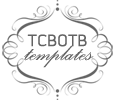Guided Math Part Two: Organization
In this post, I will explain my overall organization of Guided Math in my classroom. I will breakdown the components of Guided Math in my classroom, and I will share a sample planning document that I will use to organize each week.
First, I was reading a document created by The Creative Apple entitled "A Teacher's Guide to Math Workshop," which breaks down Math Workshop and Guided Math for teachers, and I found many ideas that provided a springboard for Guided Math in my classroom. In this document, she talks about the different components of Math Workshop: Activating Strategies, Mini-Lessons, Guided Math Groups, Math Calendar, and Math Work Stations. At the beginning of each day, I will provide an activating strategy before the mini-lesson of the day. This will open my students' minds to the topic at hand and get them thinking about math. Immediately following the activating strategy, I will give my mini-lesson on the day's topic to the students. This is a time where I will provide an overview of what we will be learning that day and creating an anchor chart for students to reference. During the mini-lesson, which is only about 15 minutes long, it is crucial to let this be the teacher's time to talk. The students will get a chance to talk and discuss during the Guided Math sessions, but for time purposes, it is important to give the students the overview of the lesson first.
Following the mini-lesson, the class will break up into groups and either work with me in a Guided Math Group or work in centers. During this time the students will be rotating through a series of centers and a meeting with me. There will be four groups and fifteen-minute rotations. It might be more helpful if you look at the picture below, which shows my planning sheet that I use each week.
 | |||
| The Lesson Plan Template I Use |
I absolutely love this planning sheet. I originally purchased it from Teachers Pay Teachers, but I made many changes to it as I have been planning Guided Math for my classroom. To start, the top of the page has places for you to put the week that you are planning, the overarching concept for the week, what topics are being maintained from the previous weeks, and the main objectives for the week. Immediately below this section is a place for your Whole Group plans. As you can see, on Monday's, I will be completing the day as a whole group. We will begin the day with a 20-minute whole group lesson, in which I will review all of the concepts that we will learn over the course of the week. After this 20-minute lesson, I will pull students to work with them in remediation based on the previous week's assessments. This will be a time to work with students in small groups or individually on the concepts they didn't quite understand from the previous week. While completing this remediation, the other students will be taking a pre-test for the concepts of the week. I will use these pre-assessments to create the groups for the week. The last portion of the class will be used to review the Calendar Work from the previous week (I will discuss later).
Tuesday's through Thursday's will have the same format. As I said earlier, each of these days will begin with a mini-lesson on the day's concepts. In this section of the planning sheet, I have room for you to write the lesson topic, the activating strategy (AS), and a place to write out the mini-lesson. The blocks below this portion list the different centers that the students will rotate through during the small-group instruction portion. I want students to practice everyday what they are learning in the lessons, which is why this center is listed every day. I also have six additional centers that the students will rotate through over the course of the week. I have left space under each center so that I can write exactly what each center entails for that week.
On Friday's, we will be completing a series of assessments. First, I will be rotating through the four groups, pulling them to the back table to complete performance assessments based on what we learned that week. The students will complete a short 4-5 question performance task at the small group table. While I am meeting with a group, the other students will be working on a Cumulative Quiz that covers all of the concepts we have learned over the course of the year. If students finish their Cumulative Quizzes, they can finish up any centers that they did not finish during the week, and they can get their "Proof" that they collected as they went to each center. They will need to collect all of this work and staple it together and turn it in. Each artifact must have the date completed, so that way I can make sure they completed each center.
Back to the document, on the far right side of the page, I have space to fill in who is in each group for the two classes that I teach. At the bottom of the pages, I have space to write out my small-group lesson plans. This space also lists the order in which I will meet with my students.
Stay Tuned for Guided Math Part Three: Centers


No comments:
Post a Comment